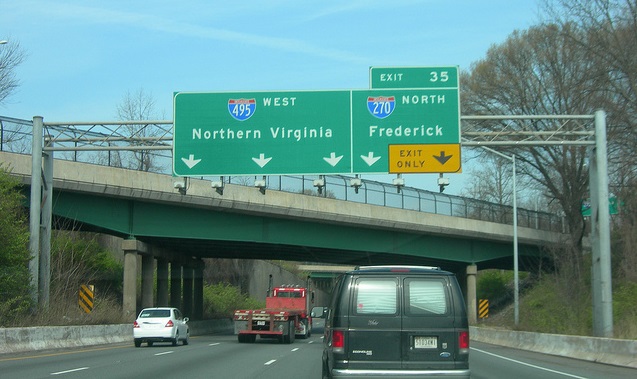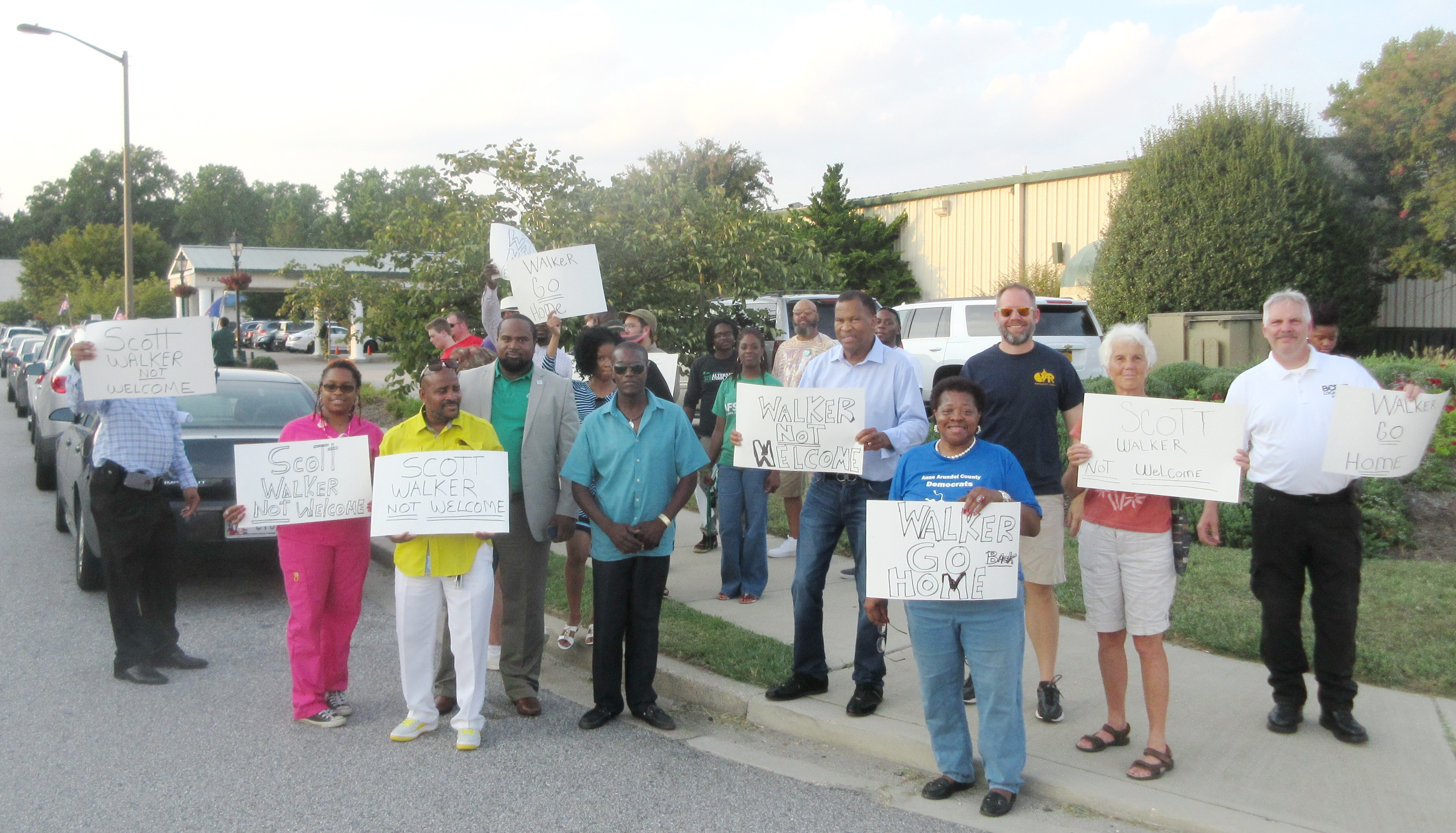Photo above by jimmywayne with Flickr Creative Commons License
By Rebecca Lessner
For MarylandReporter.com
A piece of a bridge on the Capital Beltway fell off and smashed the windshield of a car being driven by a Prince George’s County grandmother on Tuesday.
On Thursday, Maryland highway representatives got to explain to legislators reviewing their budget why the state’s 81 “structurally deficient” bridges are not unsafe for drivers.
“Deficient does not mean dangerous,” Transportation Secretary Pete Rahn told the Senate transportation budget subcommittee. “If we thought there was something about that bridge was unsafe, or someone was driving over it — for the record — we wouldn’t let them.”
Katherine Dean was stuck in rush hour traffic Tuesday, driving under Morningside’s Suitland Road below an I-495 overpass, as reported by Rick Boone of FOX 5, when a chunk of concrete fell from a bridge above onto her car, smashing the windshield. Dean was shaken but uninjured.
“Maryland’s percentage of deficient bridges is actually among the best in the country. Maryland does a better of maintaining their bridges than nearly any other state, but that doesn’t mean much to Mrs. Dean,” Rahn conceded. Rahn has not yet been confirmed as Gov. Larry Hogan’s Transportation Secretary.
Maryland has a 3% rate of structurally deficient bridges, 81 out of the 2,570 bridges the State Highway Administration is responsible for safekeeping.
Bridge safety is determined by a rating applied to three elements; the deck, infrastructure and substructure. If any of these three elements receives a score of four or less (on a scale of 0-9), the bridge is deemed “structurally deficient” and is scheduled to undergo repairs.
Melinda Peters, head of the State Highway Administration (SHA), explained that the concrete fell due to faulty “planking,” which is used to catch debris, in this case the planking was too widely spaced.
Inspections underway
“We are looking at decks [that] are structurally deficient over roadways,” Peters said.
“The public is entitled to having confidence in their system to the greatest extent possible.” said Rahn, assuring the subcommittee that he has workers out inspecting similar bridges with the same rate of deficiency, 27 bridges in total.
As for Mrs. Dean, the secretary is looking to resolve her transportation problem in the quickest fashion possible, working with the Treasurers Office, the state’s self-insurance agency, to get her back on the road.
Budget Analyst Steven McCulloch assured the subcommittee, that although recent media coverage has depicted bridges “collapsing across the nation,” the term structurally deficient bridges simply includes bridges that are undergoing, or are planned to undergo, construction or repairs.
The number of structurally deficient bridges in Maryland has decreased from 130 in 2007 to 81 in 2014. SHA is projecting 19 more to be added in 2015, bringing the total up to 100. Although SHA is using this projection as a “conservative number” for the subcommittee as there is “no definitive way” to predict future structurally deficient bridges.
“We do a lot of work on bridges in advance of them becoming structurally deficient,” said Peters. “Our bridge painting program, our deck resurfacing program, to try and keep bridges from moving into the structurally deficient area.”
Peters remarked that she expects the projected number to go down, as 25 of the bridges listed are currently under construction and will not be removed from the list until completed.
A map of all the structurally deficient bridges in Maryland is available for the public and can be viewed at SHA’s website (shown in green, select “tools” then “bridge and structure status”).
Congestion expected to go up
Also on the subcommittee’s mind was the increase in freeway congestion.
“Freeway congestion improved in calendar 2013, falling to 22% from 33% the prior year, but is projected to worsen to 27% in 2014 and 2015,” said the SHA Budget Analysis.
The decrease in 2013 was due to active construction projects ending, improving the flow of traffic. The increase projection in congestion is being based off of Vehicle Miles Traveled (VMT) which are likely to increase due to Maryland’s recovering economy, job growth and fuel prices.
Subcommittee Chair James Ed DeGrange, encouraged the SHA to find ways to clear congestion around Fort Meade in his district, which is lead provider of jobs for the Anne Arundel Mills area, as well as the airport.
DeGrange asked Rahn to “have some proactive discussion” on what would remedy this congestion, something that he feels Rahn should be passionate about since he lives in that area and “experiences the congestion first hand.”






This story illustrates the lie that the Maryland taxpayers need to pay ever increasing fuel taxes (mileage driven based taxes ?) for our “infrastructure” (the new mantra)…
“Mike” Miller whined about it after Gov. Hogan’s “State of the State” speech…